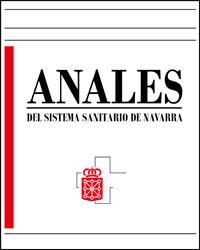Regeneración de la superficie ocular: stem cells/células madre y técnicas reconstructivas
Palabras clave:
Epitelio corneal, Células madre limbocorneales, Insuficiencia límbica, Cultivo celularResumen
La córnea es un tejido transparente constituido microscópicamente por 5 capas bien diferenciadas. El epitelio corneal es esencial para la transparencia corneal y se encuentra en continua renovación a lo largo de la vida a partir de la población de células madre limbocorneales. La localización de estas células madre limbocorneales parece residir en las capas basales del epitelio limbocorneal, de vital importancia para mantener el microambiente de estas células madre limbocorneales, que depende de una variedad de factores intrínsecos y extrínsecos. La insuficiencia límbica se produce cuando ocurre una pérdida parcial o total de estas células madre limbocorneales. Este cuadro lleva a una opacificación corneal con la consiguiente pérdida de visión. En estos casos, el trasplante corneal supone únicamente un reemplazo temporal del epitelio corneal; es necesario llevar a cabo un tratamiento previo con trasplante de limbo autólogo o alogénico, que permita regenerar la población de células limbocorneales dañadas. Para disminuir el riesgo que supone el trasplante de limbo en el ojo donante, se han propuesto técnicas de cultivo de células limbocorneales a partir de pequeñas biopsias limbocorneales.Descargas
Descargas
Publicado
Cómo citar
Número
Sección
Licencia
La revista Anales del Sistema Sanitario de Navarra es publicada por el Departamento de Salud del Gobierno de Navarra (España), quien conserva los derechos patrimoniales (copyright ) sobre el artículo publicado y favorece y permite la difusión del mismo bajo licencia Creative Commons Reconocimiento-CompartirIgual 4.0 Internacional (CC BY-SA 4.0). Esta licencia permite copiar, usar, difundir, transmitir y exponer públicamente el artículo, siempre que siempre que se cite la autoría y la publicación inicial en Anales del Sistema Sanitario de Navarra, y se distinga la existencia de esta licencia de uso.








